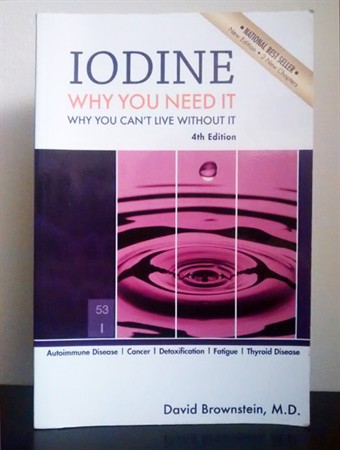Last trimester in my Clinical Nutrition class, we had a lecture on iodine that sparked my interest into learning more.
Over winter break, I read a book titled “Iodine: Why You Need It, Why You Can’t Live Without It” by Dr. David Brownstein, MD. The book was written at a level that is easily understandable by the general public, while at the same time containing enough science to engage healthcare practitioners.

The Institute of Medicine‘s recommended daily allowance (RDA) of iodine is 150 micrograms daily, an amount that’s sufficient for the prevention of goiters. In reality, the level that prevents goiters completely neglects the amount required by other organs in the body to fulfill their physiological functions without disease.
As you probably know, in the US, we iodize salt. Sea vegetables and fish naturally contain iodine, and in areas that consume those regularly like Japan, the daily intake is 12.5 milligrams (over 100 times the RDA value).
Iodine supplementation may help many conditions including breast cancer, fibrocystic breast disease, detoxification, fatigue, Graves’ disease, and Hashimoto’s disease. The book references many research articles, which I plan to access and read in the future.
Should I start supplementing with iodine? How much iodine do I need? There is an iodine urine loading test that the book recommends in order to choose a safe supplementation amount. Also, some people need other supplements in addition to iodine to increase the transport mechanisms iodine uses to get into cells.
Therefore, as with any supplement, work with a naturopathic doctor to implement iodine supplementation safely with an amount tailored to your individual needs.




0 Comments